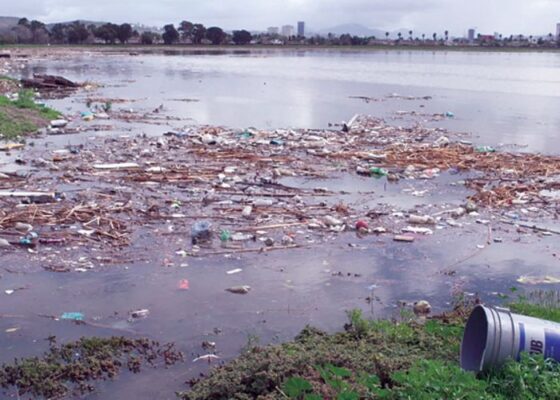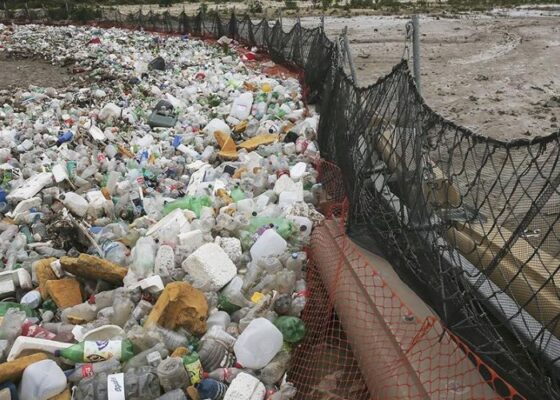As a California resident for over 20 years and avid beachgoer, I’ve become increasingly concerned about pollution in our coastal towns. One area that has faced ongoing pollution challenges is Imperial Beach, a small beach community located just north of the Mexico border. The source of the pollution? The Tijuana River. Read below about “Is the Tijuana River Polluting This California Beach Town?”.
In my 7 years of living and working in San Diego, I’ve spent countless days in Imperial Beach. Its beaches boast some of the best surfing in Southern California. Families flock there on weekends to enjoy the sand and water. But there’s an alarming problem threatening this idyllic community: sewage and toxic waste flowing from Mexico via the Tijuana River. As an environmental scientist, I’ve studied this issue extensively and seen the impacts firsthand. Let me share what I’ve learned.
Table of Contents
Tijuana River Pollution Crisis
The Tijuana River drains a 1,750 square mile watershed in Mexico and enters the United States for 5 miles before emptying into the Pacific Ocean. Unfortunately, it brings with it untreated sewage, industrial waste, and trash from Tijuana’s booming population. With over 1.8 million people, Tijuana’s infrastructure cannot handle this volume of waste. During heavy rains, their systems are overloaded and raw sewage spews into the river.
Impact of Pollution on Imperial Beach and Local Communities
This toxic cocktail ultimately crosses the border and pollutes the beaches of Imperial Beach. In fact, a 2017 study by the Surfrider Foundation found that the Tijuana River is the largest source of ocean pollution in California. The pollutants pose serious health and environmental hazards.
As a local resident, I’ve seen firsthand how this pollution impacts Imperial Beach. Sewage and garbage frequently wash up along the shoreline. The smell is awful on bad days. What’s worse is when pollution gets trapped along the beach for weeks due to the unique ocean currents in that area. The contamination often leads to beach closures, meaning families cannot swim or surf. Some people have reported rashes and infections from swimming in the contaminated waters.
Alarming Public Health Concerns Due to Toxic Contaminants
The sewage outflows have also created an alarming public health crisis. A 2020 EPA report found that the Tijuana River is impairing Imperial Beach with unsafe bacteria levels for more than 40% of the year. Contaminants like E. coli, ammonia, mercury and pesticides are up to 14 times above legal limits. These pathogens endanger beachgoers as well as local wildlife.
As an environmental scientist, I’ve been involved in sampling the water quality. The results have been frightening. We’ve detected superbugs and pharmaceutical waste in the river that are highly resistant to antibiotics. These pathogens do not stay confined to the Tijuana River. They enter the Pacific Ocean where they can impact marine ecosystems and seafood.
The toxic pollution has far-reaching environmental impacts. It’s damaging vital wetland habitats in the Tijuana River National Estuarine Research Reserve. Endangered wildlife like the Ridgway’s rail are at risk. The contamination also enters the food chain through shellfish, fish and other marine life, putting their populations and human health at risk.
Ongoing Mitigation Efforts and Their Limitations

Imperial Beach has invested heavily in mitigation efforts but they’ve proven inadequate. The city has spent $1 million on measures like trash booms to try trapping waste. They’ve installed bacterial sampling stations to monitor water quality. While these help, the pollution continues to outpace their capacity.
The Tijuana River National Estuarine Research Reserve has also taken action. Their Comprehensive Conservation and Management Plan aims to research and address this cross-border issue. But the scale of the problem requires federal intervention.
That’s why Imperial Beach and other stakeholders are demanding accountability from Mexico and increased infrastructure investment to stop the flow of pollution. In 2018, the city sued the U.S. section of the International Boundary and Water Commission for violations of the Clean Water Act. However, real change has been slow.
My Commitment to Tackling the Tijuana River Pollution Crisis
The EPA has stepped up recently under the U.S.-Mexico Border Water Infrastructure Program. Their 2021 report highlights key strategies like improving waste treatment infrastructure and expanding river management capacity. But much more work remains.
As someone who cares deeply about this issue and spends significant time in Imperial Beach, I’m committed to being part of the solution. Here are three ways I’m making a difference:
- Educating others: I present my scientific research on the Tijuana River pollution to raise awareness about this issue. I want more people to understand these impacts and get involved.
- Volunteering: I volunteer with local organizations like the Surfrider Foundation on clean-up days. Removing trash and debris helps mitigate some pollution.
- Reducing personal waste: I’m mindful to reduce my plastic usage and properly dispose of chemicals, trash and recyclables. Small individual actions collectively make a difference.
The Tijuana River challenge requires cooperation across borders, governments, and stakeholders. But I’m optimistic we can find solutions. Through education, innovation and diligent effort, I believe we can curb the pollution and restore Imperial Beach to its former glory. The health of this coastal ecosystem and community depends on it. I hope you like reading “Is the Tijuana River Polluting This California Beach Town?”.

I am Monica, the enthusiastic explorer behind funthingsworld.com. With a degree in Leisure and Recreation Management and over 5 years of diving into thrilling adventures, I’ve made it my mission to uncover the best and most exciting activities around the globe.
Stay connected and get a sneak peek into my adventures on Instagram: @mongjerde











